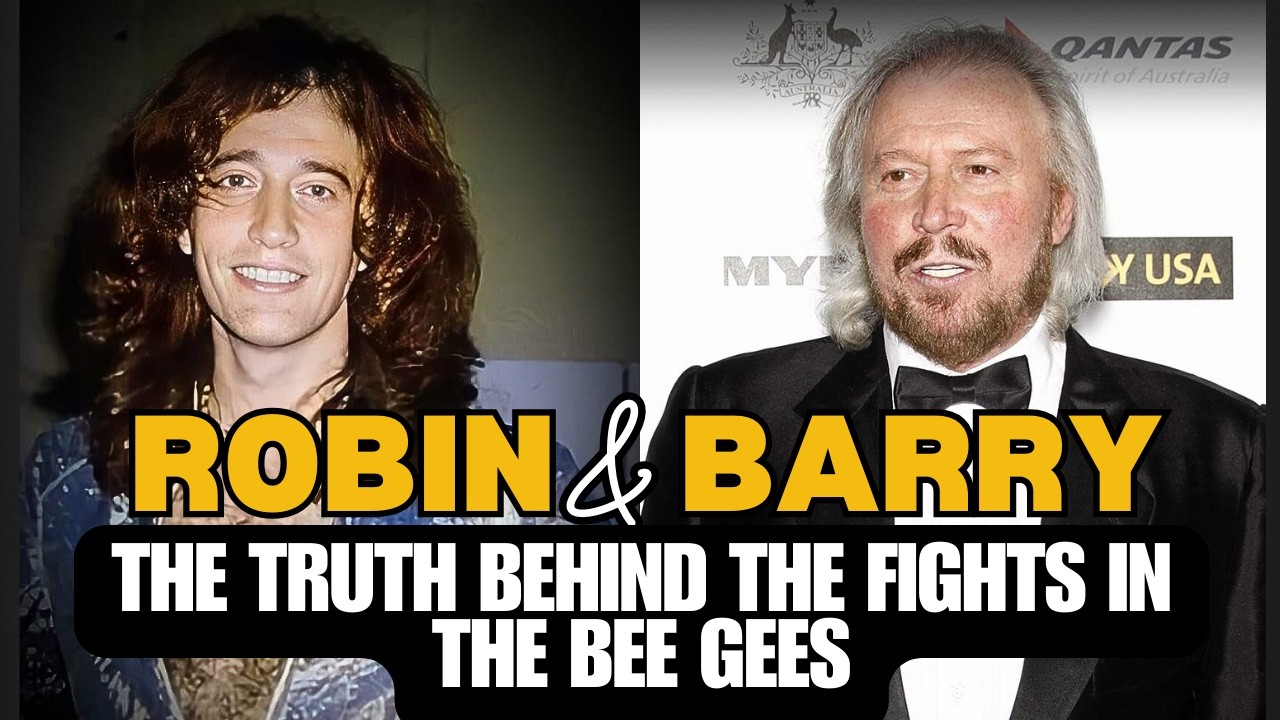
The Secret Struggles Behind the Bee Gees: Brothers in Harmony, Rivals at Heart
The story of the Bee Gees is more than a tale of chart-topping songs and a global musical revolution — it’s a human story of brotherhood, rivalry, and redemption. At the center of it all were Barry and Robin Gibb, two-thirds of the legendary trio whose harmonious voices belied the often complex and contentious relationship behind the scenes.
The Bee Gees began to carve their place in music history in the late 1960s, gaining initial fame with tracks like “Massachusetts” and “To Love Somebody.” However, real superstardom arrived in the mid-1970s, largely due to their bold pivot from melancholic ballads to the upbeat rhythms of disco. With the release of the album Main Course and later the era-defining Saturday Night Fever soundtrack, the Bee Gees cemented themselves as cultural icons.
Each brother brought something unique to the band. Barry Gibb, with his smooth falsetto and undeniable charm, naturally gravitated into the spotlight. Robin Gibb, more introspective and experimental, contributed a haunting vibrato and desired deeper thematic exploration in their work. Maurice Gibb, the affable and often underappreciated middle brother, served as the crucial equilibrium between his more dynamic siblings, frequently stepping in to diffuse tensions.
The competing visions of Barry and Robin inevitably created friction — a battle of artistry vs. public appeal, of subdued reflection vs. commercial charisma. Robin believed his creative input was overshadowed by his older brother’s prominence. These frustrations reached a tipping point in 1969 when Robin briefly left the group to pursue a solo career. His departure nearly dissolved the Bee Gees altogether, leaving Barry and Maurice to carry on in his absence.
That hiatus proved painful, particularly for Maurice, who found himself caught in the middle of a personal and professional rift. Yet the bond of blood triumphed. By 1970, after a series of reconciliatory conversations, Robin rejoined the group. Together, the trio discovered that their blended talents far outweighed what any could accomplish alone.
Their reunion ushered in a golden era. As the face of the Bee Gees during the disco craze, Barry became the dominant image in the media, which rekindled some of Robin’s earlier resentments. Still, they continued to perform and create, putting aside personal grievances for the sake of their shared vision. While minor conflicts persisted, they remained bound by a familial sense of purpose and deep mutual respect.
Tragedy reshaped their relationship. When Maurice passed away in 2003, Barry and Robin found solace in one another. That loss led to profound reflection and rekindled a bond rooted not in musical ambition, but in shared grief, love, and memory. Barry and Robin grew closer, embracing their brotherhood with newfound clarity.
Robin’s passing in 2012 deeply affected Barry, who has since spoken with honesty and sorrow about their past arguments and lost time. His immense regret is tempered only by the knowledge that their legacy lives on — not just in records sold or awards won, but in the unbreakable connection they shared.
The tale of the Bee Gees is one of far more than melodies and fame. It is a poignant reminder of the vulnerabilities hidden behind the stage lights. It is about the power of family — how deep differences can coexist with even deeper affections.
In the end, Barry and Robin Gibb’s relationship was a portrait of complex brotherhood: fraught with rivalry and misunderstanding, yet armored with love and mutual admiration. Their journey speaks not only to the nature of creativity and collaboration but also to the resilience of familial ties. Through it all, their music endures, a testament to their incredible synergy and unbreakable bond.